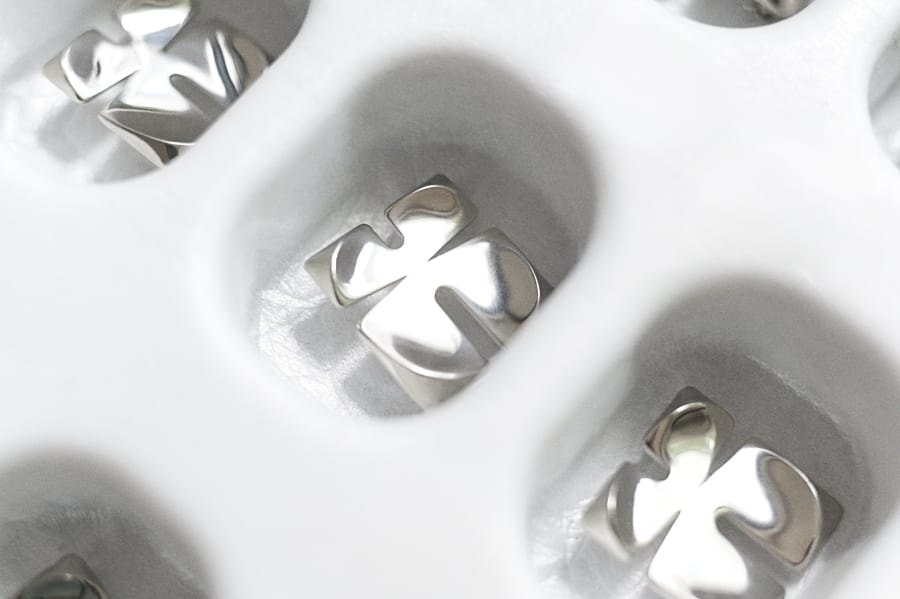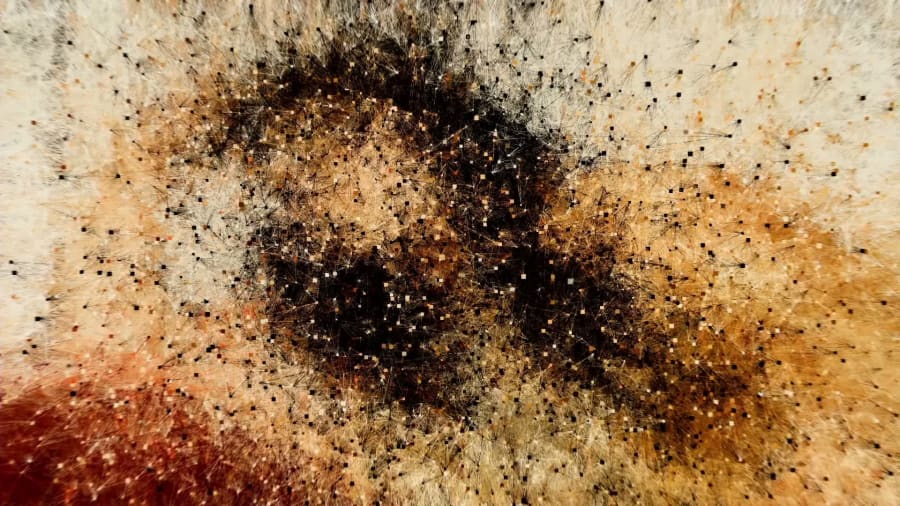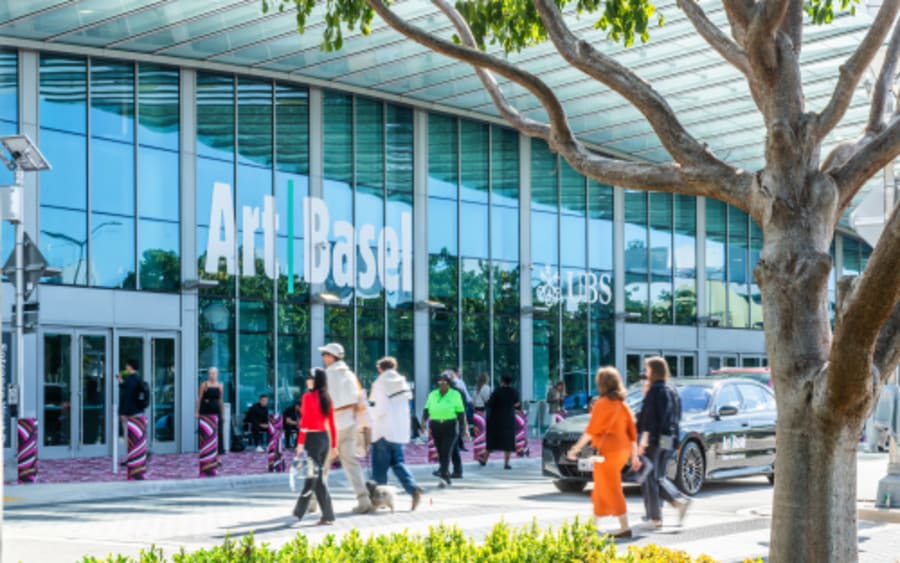When the leading Swiss architect Jacques Herzog was approached to design a trophy for the Art Basel Awards, he was certain of one thing: he would take a different direction from that of familiar creative accolades. While Venice has its age-old symbol of the city, the Golden Lion, and the Oscar is a sword-bearing knight, Herzog was not interested in doing something figurative. Nor did he favor the precious metals that typically announce an accolade’s value. Instead, in pursuing ‘a material manifestation of creativity,’ he looked to the abstract. The 11 trophies for the inaugural edition of the Art Basel Awards will be presented on December 4, during the first Art Basel Awards Night at the New World Center in Miami Beach. Each is an amorphous swirl of hand-blown transparent glass, suggesting a breath or cloud. ‘It’s a very unlikely proposal,’ Herzog reflects. ‘The more I thought about it, the more interesting it seemed because it’s so different from anything that’s ever been done for an award.’
What’s especially striking about Herzog’s design is how, in Herzog’s words, ‘it’s not just a representation of recognition, it embodies it,’ ingeniously fusing concept, process, and material. ‘Blowing glass means you breathe into something — and breath is actually "inspiration",' the architect continues. ‘Without breathing we wouldn’t exist. It’s the origin of everything. Each time you breathe [into glass], it gives a different shape – like every thought we have is different. Like clouds in the sky: always changing. They can be interpreted differently – sometimes you see figures, sometimes you don’t – and this reflects human creativity. That’s why a cloud-like object in glass seemed very appropriate for the idea of endless creativity, endless shapes, endless possibilities we humans have.’
Few can have a better grasp of the boundless nature of artistic endeavor than Herzog. From the earliest days collaborating with his lifelong creative partner Pierre de Meuron on a pageant for Joseph Beuys for Basel’s Carnival, to their 21st-century designs for museums such as London’s Tate Modern, Hong Kong’s M+, and the Pérez Art Museum Miami, his approach has been expansive, diverse, and multidisciplinary. Herzog has always eschewed the limitations of a set style. As such, he is ideally placed to conceive the trophy for the Art Basel Awards, the first to recognize achievement across the many enterprises that constitute the art world.
The trophy itself is a testament to what can be achieved through collaboration and, true to the fair’s Swiss origins, is rooted in the country’s creative community. ‘Switzerland is small, but it maintains a multifaceted quality in research and production, attracting artists from everywhere,’ says Herzog. ‘That’s very much the spirit of Basel, its global reach.’ To realize his vision, Herzog turned to a local artisan glassworker and feted artists’ collaborator, Matteo Gonet, whose previous commissions include fashioning stained glass windows conceived by the Swiss artist Valentin Carron for a chapel in Martigny and using recycled glass to make Douglas Mandry’s crystalline abstract geometric sculptures that sit on a summit in the Alps like glittering hunks of ice. Herzog, Gonet notes, was one of those collaborators who was ‘happy to be motivated or surprised by the material.’
One of the best-known culture prizes, the Cannes Film Festival’s Palme d’Or was developed from a drawing by the Surrealist Jean Cocteau, and Herzog’s trophy design also began with a sketch. He remembers drawing on the floor of Gonet’s studio, loosely scribbled shapes ‘expressing this idea of intertwining forms, like smoke or clouds.’ The glassworker says that the brief was more about an idea than a set plan, on the one hand ephemeral – to make something expressing ‘how someone’s thinking takes shape’ – and at the same time especially attuned to glass-working. While transparent, malleable glass might speak to the elusive and ungraspable, it is also a challenging material to work with physically.
Using techniques that date back two millennia, the awards’ 11 trophies have been free-blown. Gonet explains how, rather than squeezing glass into a mold, molten glass that has been heated to 1,200 degrees is blown into to create a volume, then shaped with a hand torch. ‘If the glass is too thin, it will collapse,’ he says. ‘If it’s too thick it looks like a pancake.’ Maintaining the correct temperature is critical, and the method requires a surprising amount of movement, with the scorching glass object repeatedly spun around at the end of a long baton, and returned multiple times to the oven. ‘You use heat and gravity,’ he says. The entire shaping process takes around one hour – ‘once you start, you can’t stop’ – with many more hours to cool.
Different hues were experimented with, as Herzog recalls, some ‘with traces of smoke from heat’ and some golden. ‘Gold is associated globally with recognition,’ the architect says. ‘But they looked too narrative. We didn’t want to tell a story.’ Ultimately, they arrived at using timeless clear glass for its ‘pure, immaculate expression.’
How the artists, curators, collectors, and other prize-winners will feel when they are handed a trophy on the inaugural Art Basel Awards Night was key to Herzog’s thinking, too. While his earlier experiments with the cloud form were round, the trophy has a skyward thrust, suggesting the standing figure of prize statuettes or the Olympic torch flame. ‘It needed to be vertical, but still unique each time,’ he says, ‘like humans, each different but standing upright.’
Herzog has designed a trophy to stand the test of time, which he hopes years from now, will be instantly identifiable as the Art Basel Award, even though they are ‘never identical.’ Rather, like the best artworks, it is open-ended. ‘We wanted to offer a shape everyone could recognize in their own way. That’s the real quality of the object.’
Skye Sherwin is an art writer based in Rochester, UK. She contributes regularly to The Guardian and numerous art publications.
About the Art Basel Awards
Launched by Art Basel in 2025 and presented in partnership with BOSS, the Art Basel Awards represent the first global distinction of their kind — honoring exceptional achievements across the contemporary art world. Each year, an International Jury of experts awards Medals and Awards to individuals and organizations spanning the industry whose practices and contributions are shaping the future of contemporary art. The first Art Basel Awards Night will take place on December 4, 2025, at the Frank Gehry–designed New World Center in Miami Beach and is supported by the City of Miami Beach and the Greater Miami Convention and Visitors Bureau.
Caption for header image: Design © Herzog & de Meuron, design by Jacques Herzog in collaboration with Glassworks Matteo Gonet. Photograph by Jessica Dreier.
Published on November 21, 2025.


